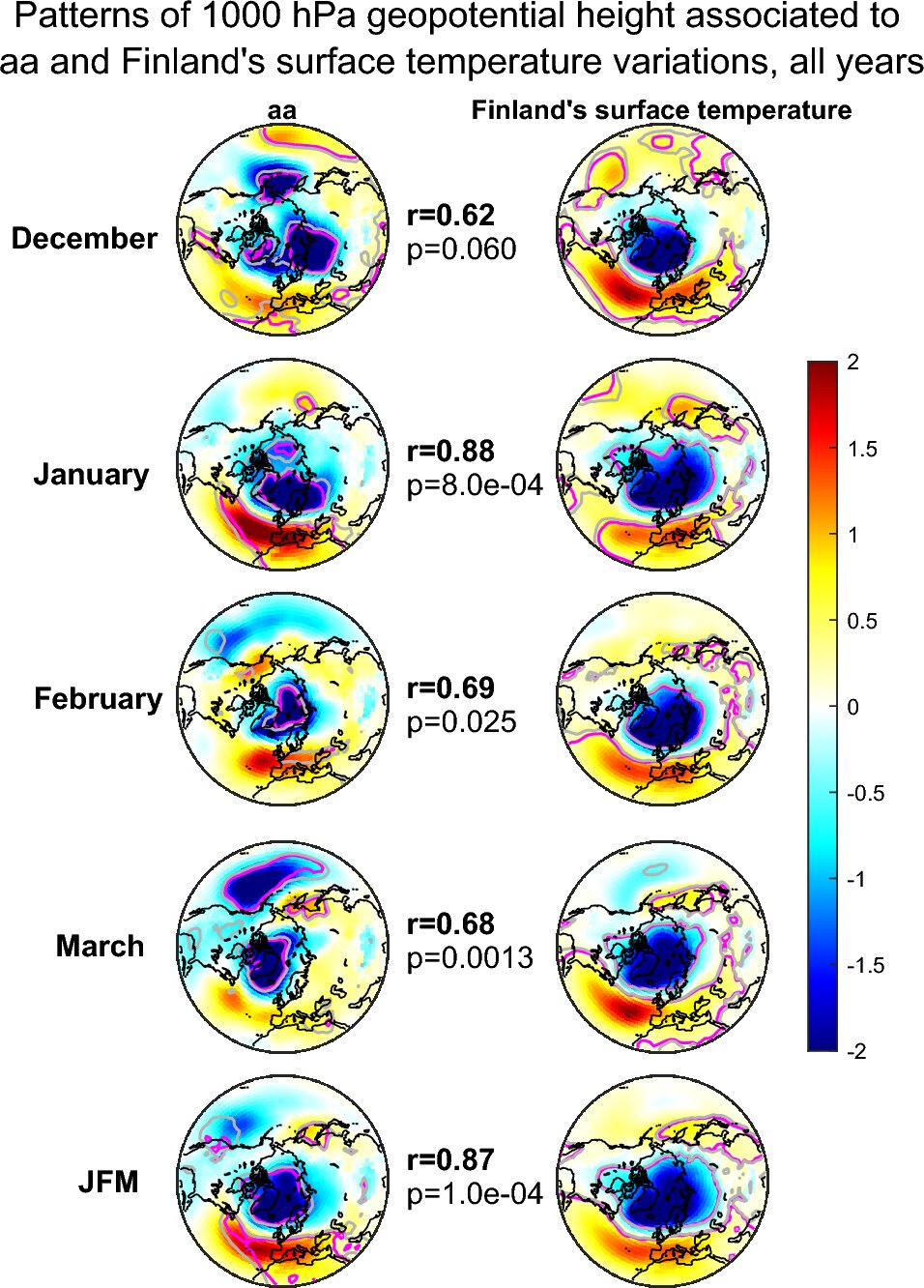× close
The Space Climate Research Group at the University of Oulu, Finland has been studying the effects of energetic particle precipitation from space, more commonly known as the aurora borealis or Northern Lights, on winter weather variations for quite some time. The aurora borealis is not only a beautiful light phenomenon, but also involves chemical changes that lead to ozone depletion high in the polar stratosphere in winter.
Ozone depletion caused by energetic particles intensifies the polar vortex, a strong wind that blows from west to east around the polar region during the winter season. Intensified polar vortex also enhances westerly winds at the surface, producing mild winters in northern Europe and Finland in particular.
“On the other hand, during winters with weak particle precipitation, the polar vortex can weaken and even break down completely, allowing cold Arctic air to flow south. This is when Finland and Northern Europe typically experience cold spells, like this winter,” says Associate Professor Timo Asikainen.
“The polar vortex has already broken once this winter and is forecasted to break again this coming weekend. Our own models predicted the likely break-up of the polar vortex during the winter already last summer.”
Experience shows that, especially in Finland, the consumption of electricity and, more generally, of energy used for heating, is very much dependent on weather. This raises the question: How much can the particle precipitation from space affect electricity consumption via the polar vortex? A recent study by the University of Oulu’s Space Climate Group was the first to address this very question.
The study, published in Scientific Reports, found a significant influence of particle precipitation on Finland’s winter temperatures and on the temperature-dependent part of electricity consumption during the winter period (January–March).
× close
At best, the variability associated with energetic particle precipitation was about 14% of the average level of electricity consumption in Finland during winter and explained up to 50% of the inter-annual variations in electricity consumption.
“The most significant result of the study showed that the particle precipitation, or geomagnetic activity as its proxy, significantly influences Finland’s winter temperatures and electricity consumption through the polar vortex: Strong particle precipitation corresponds to higher winter temperatures and lower electricity consumption, and vice versa,” says Veera Juntunen, a doctoral researcher.
The study used comprehensive electricity consumption statistics from the 1990s to the present day from the Finnish Energy association. “From these data, we had to carefully remove variations unrelated to temperatures. This then revealed the influence of particle precipitation on temperature and electricity consumption,” says Juntunen.
The connection was valid from the 1950s to the present, but interestingly only in winters when the equatorial stratospheric winds, the so-called QBO winds, blow from the east.
“This QBO effect has already been observed in previous studies and is related to the fact that when QBO winds are easterly, large-scale atmospheric waves, the so-called planetary waves, are guided from the lower atmosphere into the polar stratosphere. There, together with the particle precipitation, they create the observed effect on the polar vortex,” explains Asikainen.
The study reveals an interesting new societal influence of the space weather. Taking into account particle precipitation from space might help to predict winter temperatures and electricity consumption, in the best case, several months or even years in advance, if we learn how to better predict the particle precipitation in longer timescales than currently.
More information:
Veera Juntunen et al, Electricity consumption in Finland influenced by climate effects of energetic particle precipitation, Scientific Reports (2023). DOI: 10.1038/s41598-023-47605-8

Dr. Thomas Hughes is a UK-based scientist and science communicator who makes complex topics accessible to readers. His articles explore breakthroughs in various scientific disciplines, from space exploration to cutting-edge research.








